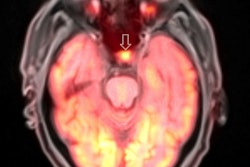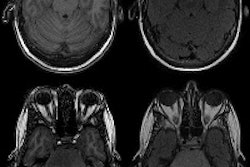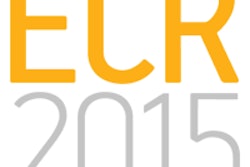
Radiologists often discover incidental findings during image interpretation, but it's not always easy to ascertain which follow-up studies, if any, should be suggested. Decision-support software can be a huge help, according to Dr. Sanjay Saini of Massachusetts General Hospital (MGH).
The institution adopted internally developed decision-support software to facilitate proper recommendations for follow-up imaging of pulmonary and adrenal nodules. MGH found that it saved time as well as improved compliance with radiology department standards.
"It's overall a time-saver for the radiologist, but most importantly, it's an anxiety-saver because I really don't have to think very hard, particularly at the end of the day, if what I'm recommending is appropriate or not," Saini said.
He discussed MGH's experience with clinical decision-support software for radiologists in a session during the recent 2014 International Symposium on Multidetector-Row CT (MDCT 2014) in San Francisco.
Complicated process
Radiologists are making follow-up recommendations for additional imaging with increasing frequency. A 2009 study at MGH found that the number of patients who received recommendations for follow-up imaging had tripled over a 15-year period, Saini said.
"We are doing it now in about one out of every six examinations, and this is modality-agnostic," he said.
The process of providing imaging recommendations is also complicated and prone to variation; radiologists may find it difficult to internalize available decision algorithms, which keep changing, according to Saini.
"As a result, when we do make recommendations, often we're wrong," he said.
Another MGH study presented at the RSNA 2013 meeting investigated lung nodules seen on abdominal CT. About half the time, the recommendations matched MGH radiology department guidelines, but the other half included errors in both overuse and underuse of CT.
The frequency of recommendations also varies according to the age of the practicing physician, Saini said. Junior radiologists make recommendations much more often than more experienced radiologists.
"This [situation] doesn't make much sense from a system point of view," he said.
To improve this dynamic, MGH sought to develop an algorithm that would provide clinical decision support and be hardwired into the radiologist's speech recognition tool, Saini said. The group also wanted an algorithm that could be modified and was consensus-based, taking into account all of the institution's practicing radiologists and referring physicians. The software also had to be efficient to use, he said.
Ditsel
The result was Ditsel, an MGH-developed point-of-care clinical decision-support tool for radiologists. Accessible through an icon on the radiologist dashboard at every speech recognition workstation, Ditsel currently includes decision-support algorithms for both pulmonary and adrenal nodules.
After clicking on either the pulmonary nodule algorithm or the adrenal nodule algorithm, the radiologist enters information on nodule history, morphology, and size trend. This information, along with any recommendations for follow-up imaging, can also be automatically entered into the radiology report.
In the study presented at RSNA 2013, the MGH researchers found that after Ditsel was implemented, adherence to the department's guidelines for recommendations of follow-up imaging for pulmonary nodules went from 50% to 65% (p = 0.0036). The tool was used in 40% (57/141) of the patients after the technology was adopted, they also noted.
Delving deeper into the data, the team found that Ditsel's value really stood out in the cases in which it was used. Concordance with department guidelines increased to 96% among these patients, compared with concordance of 45% in cases in which the tool was not used, despite being available.
"This is clearly a useful tool and relieves anxiety," Saini said. Ditsel also offers an opt-out feature, he noted.
"For example, if you have a 90-year-old with abdominal pain and you see an adrenal nodule, and the algorithm says to get a follow-up CT in six months, you sometimes wonder if you're doing the right thing," he said. "So it does give you the option of opting out."
Saini said he understands that similar decision-support capability for radiologists will be incorporated into the ACR Select clinical decision-support software. Another option is the RadsBest app, which is available in the iTunes App Store.
"The ACR is on top of this and the insurance companies are on top of this, so we will have a system in place through most, if not all, radiology practices that will allow us in a formal way to decide when we make imaging recommendations for findings that we see," Saini said.




















